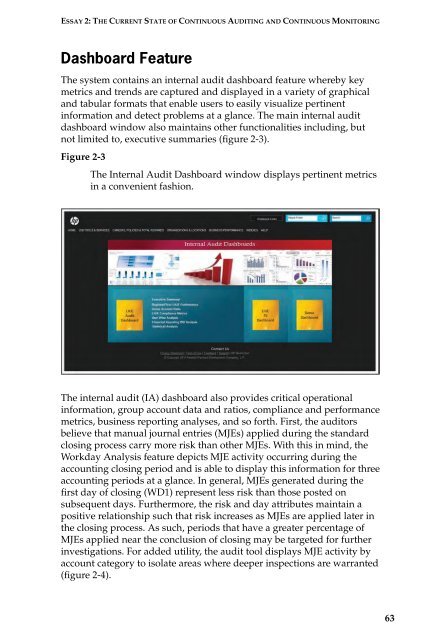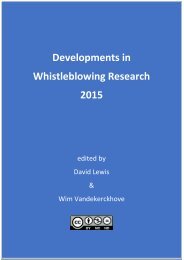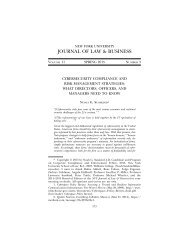AUDIT ANALYTICS AUDIT
x8YaD9
x8YaD9
- No tags were found...
Create successful ePaper yourself
Turn your PDF publications into a flip-book with our unique Google optimized e-Paper software.
ESSAY 2: THE CURRENT STATE OF CONTINUOUS <strong>AUDIT</strong>ING AND CONTINUOUS MONITORING<br />
Dashboard Feature<br />
The system contains an internal audit dashboard feature whereby key<br />
metrics and trends are captured and displayed in a variety of graphical<br />
and tabular formats that enable users to easily visualize pertinent<br />
information and detect problems at a glance. The main internal audit<br />
dashboard window also maintains other functionalities including, but<br />
not limited to, executive summaries (figure 2-3).<br />
Figure 2-3<br />
The Internal Audit Dashboard window displays pertinent metrics<br />
in a convenient fashion.<br />
The internal audit (IA) dashboard also provides critical operational<br />
information, group account data and ratios, compliance and performance<br />
metrics, business reporting analyses, and so forth. First, the auditors<br />
believe that manual journal entries (MJEs) applied during the standard<br />
closing process carry more risk than other MJEs. With this in mind, the<br />
Workday Analysis feature depicts MJE activity occurring during the<br />
accounting closing period and is able to display this information for three<br />
accounting periods at a glance. In general, MJEs generated during the<br />
first day of closing (WD1) represent less risk than those posted on<br />
subsequent days. Furthermore, the risk and day attributes maintain a<br />
positive relationship such that risk increases as MJEs are applied later in<br />
the closing process. As such, periods that have a greater percentage of<br />
MJEs applied near the conclusion of closing may be targeted for further<br />
investigations. For added utility, the audit tool displays MJE activity by<br />
account category to isolate areas where deeper inspections are warranted<br />
(figure 2-4).<br />
63








